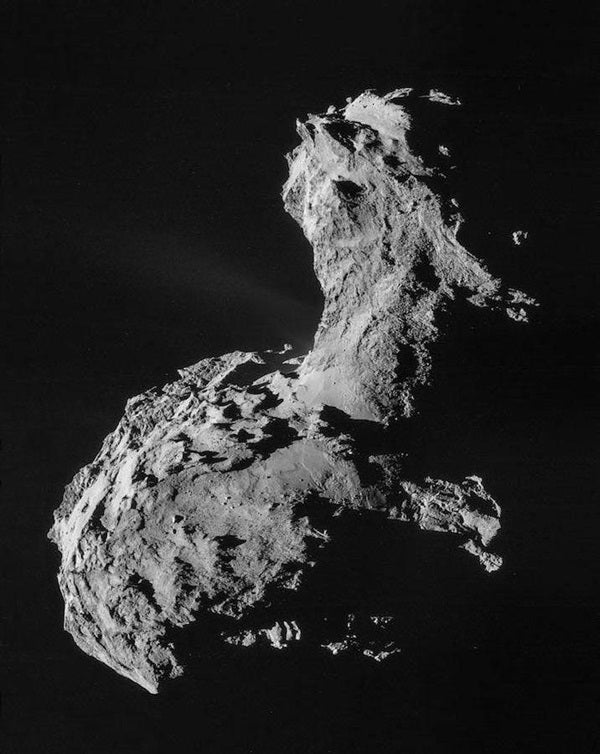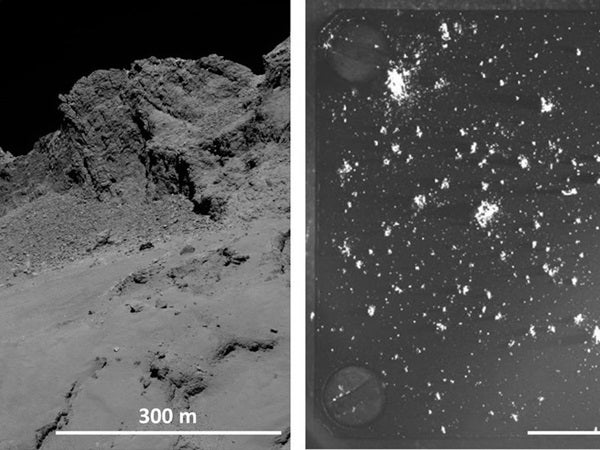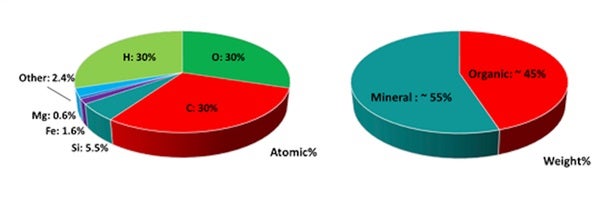Today, in a study published in Monthly Notices of the Royal Astronomical Society, the Rosetta team added onto the space probe’s already impressive legacy, finding that organic molecules make up about half of the dust emitted by Comet 67P. “Rosetta’s comet thus belongs to the most carbon-rich bodies we know in the solar system,” said co-author Oliver Stenzel in a press release.
When a comet approaches the Sun, the frozen gases trapped beneath its surface quickly evaporate in a process called outgassing. This often dislodges tiny dust grains from the surface of the comet, which can then be carried into space by the escaping gas.
Martin Hilchenbach, the principal investigator of the COSIMA team, said, “Our analyses show that the composition of all these grains is very similar.” This finding led the team to conclude that the comet’s dust is likely made of the same ingredients as the comet’s nucleus.
According to the study, organic molecules (which are carbon-based molecules like proteins, carbohydrates, and nucleic acids) account for 45 percent of the total mass of all the collected dust. The team found the remaining 55 percent of the dust is in the form of inorganic minerals — mostly silicates.
The research may also have implications for the origins of life here on Earth.
A previous paper by the COSIMA team showed that the carbon found in Comet 67P mainly comes in the form of large, organic macromolecules. When combining this with today’s findings, it seems that complex organic molecules make up a significant chunk of Comet 67P. Therefore, if comets were responsible for seeding the early Earth with organic matter (as many researchers suggest), then these seeds may have already been somewhat complex by the time they reached Earth.












